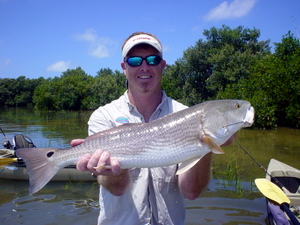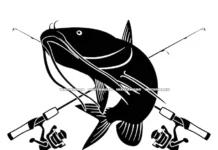By Neil Taylor, Strike Three Kayak Fishing
What’s your game plan for learning a “New Area” ?

Question: “Neil- My request is that maybe you would consider writing an article or something along the lines of ‘How to approach a new area that you’ve never fished before.’ When you’re trying out a brand new area: What’s your game plan for learning the area and what do you look for when you’re out there?”
Scouting new areas is one of the best adventures there is. I do know some people who just like to fish the same areas they already know, and stick to it. They’re comfortable with their success rate and they’re happy with that. But a majority of the people I know want to experience new areas and take up the challenge to see if they can have a successful outing, even on their first time there. It’s “something new” and a game of “my skill against nature.”
Before you go: The game plan takes shape long before you are on the water with the anglers’ version of “Research and Development”
1) Talk to someone you know who fishes that area. Ask them what particular issues various tidal stages may present, lure selection and any safety considerations for that area. The reliability of information is important. The “Challenge Hungry” anglers will skip this step.
2) Aerial photography. Look at maps prior to a trip to a new area. I’ll often decide my “fishing plan” based on the tidal flow and the structures (creeks mouths, oyster bars, deeper water) I see from these images. Learn what the “colors mean” on the aerial views.
3) “When to go”
Low tides. If you want to learn the true “lay of the land”, investigate a new area on a very low tide. The negative low tides of every month will give you the best insight into the contours, depths and composition of sea bottom. Take along a pair of binoculars to study areas that are high-and-dry that you can’t approach in this situation, studying those depressions, ruts and holes that will hold fish hours later on the higher tide. The “whole picture” on “lay of the land” makes it infinitely helpful to identify the following: Where are the depth changes, the strongest current flow, the baitfish, the oysters, creek mouths, grass beds and other structure.
On the Water:
Move around.
The actual practice of experiencing that area and learning it may span several trips especially if it’s a fairly large area. “Learning” an area could be a whole lot different from “fishing” the area. If you really want to investigate and learn an area, “Explore more, fish less” on that initial trip to that location. Cover as much water as you can, making note of the fish you locate in different areas as you scout the waters. Just because you didn’t catch a fish doesn’t mean they weren’t there: For future outings, return to locations you found fish on that same tidal situation.
Be observant and alert.
Actively look for signs of the fish. If you do not have polarized eyewear GET polarized eyewear, cutting the glare enabling you to see down into the water! Pay attention to food sources like baitfish schools, blue crabs and things that eat them like a wide variety of gulls, terns, pelicans and wading birds. Most importantly, “where did I find the fish and what was the tide?” Moving around through the shallows of new areas, sedentary fish will spook and leave “mud puffs”, evidence on something “non-mullet”.
Just enjoy the adventure of learning a new area! If you don’t recognize beautiful scenery, regardless of the fishing results, you probably have a lot bigger problems than “not catching fish.” But enjoy the best of both worlds: Do your research and make your guesses compared to your knowledge of similar areas you already know. You may do very well. If not, it’s simply “knowledge for next time.” 
- The Neil Blog… - July 26, 2023
- The Catfish - July 26, 2023
- update - July 22, 2023












